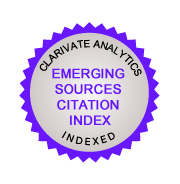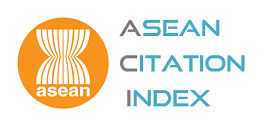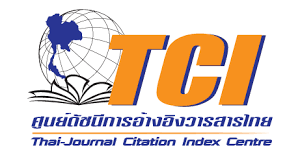Investigation of pressure and temperature distributions in aerofoils using CFD simulation
DOI:
https://doi.org/10.55713/jmmm.v35i2.2213คำสำคัญ:
Aerofoil, M13, Eppler 1233, Computational, Pressure co efficientบทคัดย่อ
Most aircraft derive the design of their wings, fins, and horizontal stabilizers from this construction approach, incorporating curved surfaces to enhance the lift-to-drag ratio during flight. Over the past decade, Computational Fluid Dynamics (CFD) has become the leading tool for designing components and processes involving fluid or gas movement across industries such as aviation, automotive, and manufacturing. This study examines the aerodynamic characteristics—including pressure, density, and temperature distribution, as well as lift and drag forces—of two different angles of attack based on the M13 and Eppler 1233 airfoils. The analysis considers an airfoil with varying chord thickness while maintaining a consistent maximum thickness as a percentage of the chord length. The primary objective of this research is to conduct a comprehensive numerical assessment of airfoil structures. A 2D computational simulation is performed on different airfoil shapes at angles of attack of 0° and 8° using ANSYS Fluent. The results reveal variations in flow characteristics across different structures and evaluate the balance between lift and drag forces at various angles of attack to enhance aerodynamic efficiency. According to the study, aerodynamic performance and stability are both enhanced when aerofoil designs are optimised to reduce turbulence and flow separation. This exemplifies the compromise that must be made to maximise aerodynamic performance by either increasing lift or controlling drag. The findings contribute to a deeperunderstanding of airflow over airfoil structures and its impact on aircraft performance.
Downloads
เอกสารอ้างอิง
N. Ahmed, B. S. Yilbas, M. O. Budair, “Computational study into the flow field developed around a cascade of NACA 0012 airfoils,” Computational Methods Application Mechanical Engineering, vol. 167, pp. 17-32, 1998. DOI: https://doi.org/10.1016/S0045-7825(98)00104-2
M. Arvind, “CFD analysis of static pressure and dynamic pressure for naca 4412,” International Journal of Engineering Trends and Technology, vol. 4, pp. 3258-3265, 2010.
P. Bernett, “Effect of winglets induced tip vortex structure on the performance of subsonic wings,” Aerospace Science and Technology, vol. 10, pp. 328-340, 2016. DOI: https://doi.org/10.1016/j.ast.2016.08.031
F. M. Catalano, and H. D. Ceron-Munoz, “Experimental analysis of aerodynamics characteristics of adaptive multi-winglets,” 43rd AIAA Aerospace Sciences Meeting, vol. 10, p. 1231, 2005. DOI: https://doi.org/10.2514/6.2005-1231
B. C. Mathew, A. Thakan, M. L. Jeyan, “A review on aero-dynamic performance of NACA air foil for various Reynolds number,” International Conference on Thermo-fluids and Energy Systems, vol. 2, p. 012003, 2018. DOI: https://doi.org/10.1088/1742-6596/1473/1/012003
C. K. Chen, and C.H. Hsiun, “Aerodynamic characteristics of a two dimensional air foil with ground effect,” Journal of Aircraft, vol. 33, pp. 386-392, 1996. DOI: https://doi.org/10.2514/3.46949
J. M. Kuhlman, and P. Liaw, “Winglets on low-aspect-ratio wings,” Journal of Aircraft 25, vol. 10, pp 932- 941, 2019. DOI: https://doi.org/10.2514/3.45682
D. W. Dawson, “A practical computer method for solving ship-wave problems,” in Proceedings of the second international conference on numerical ship hydrodynamics. USA, 1977.
E. Douvi, T. I. Athanasios, D. P. Margaris, “Evaluation of the turbulence models for the simulation of the flow over a National Advisory Committee for Aeronautics (NACA) 0012 airfoil,” Journal of Mechanical Engineering Research, vol. 4, pp. 100-111, 2012. DOI: https://doi.org/10.5897/JMER11.074
S. Goel, “Turbine air foil optimization using Quasi-3D analysis codes,” International Journal of Aerospace Engineering, vol. 2, p. 16875974, 2008. DOI: https://doi.org/10.1155/2009/531358
I. Sadaq , S. N. Mehdi, S. D. Mehdi, and S. Yasear. “Analysis of NACA 0020 aerofoil profile rotor blade using CFD approach,” Materials Today: Proceedings, vol. 64, pp. 147-160, 2022. DOI: https://doi.org/10.1016/j.matpr.2022.04.205
R. Kavya, “Multi-winglets: Multi-objective optimization of aerodynamic shapes,” 11th World Congress of Computational Mechanics, vol. 56, pp. 87-112, 2019.
P. J. Kunz, and I. Kroo, “Analysis, design and testing of airfoils for use at ultra-low reynolds numbers, proceedings of the
conference on fised, flapping and rotary vehicles at very low reynolds numbers,” edited by T. J. Mueller, Univ. of Notre Dame, Notre Dame, IN, pp.349-372, 2000.
E. Livne, and T. A. Weisshaar, “Aeroelasticity of nonconventional airplane configurations-past and future,” Journal of Aircraft, vol. 40, pp. 1047-1065, 2003. DOI: https://doi.org/10.2514/1.2273
M. Avvad, Vishwanath, A. R. Kaladgi, R. Muneer, M. Kareemullah, I. M. Navaneeth, “Performance analysis of aerofoil blades at different pitch angles and wind speeds,” Materials Today: Proceedings, vol. 47, pp. 6249-6256, 2021. DOI: https://doi.org/10.1016/j.matpr.2021.05.219
N. Haquea, M. Alia, and I. Ara, “Experimental investigation on the performance of NACA 4412 aerofoil with curved leading edge planform,” Procedia Engineering, vol. 105, pp. 232- 240, 2015. DOI: https://doi.org/10.1016/j.proeng.2015.05.099
A. O. Nuhait, and M. F. Zedan, “Numerical simulation of unsteady flow induced by a flat plate moving near ground,” Journal of Aircraft, vol. 30, pp. 611-617, 1993. DOI: https://doi.org/10.2514/3.46389
D. Steinbach, “Comment on aerodynamic characteristics of a two dimensional air foil with ground effect,” Journal of Aircraft, vol. 34, pp. 445-456, 1997. DOI: https://doi.org/10.2514/2.2195
T. Sumaryada, A. M. Jaya, and A. Kartono, “Simulating the aerodynamics profiles of NACA 4312 air foil in various incoming airspeed and gurney flap angle,” Journal of Physics and Physics Education, vol. 4, pp. 1-6, 2018. DOI: https://doi.org/10.31758/OmegaJPhysPhysEduc.v4i1.1
S. R. Yuvaraj, and P. Subramanyam, P. “Design and analysis of wing of an ultralight aircraft,” International Journal of Innovative Research in Science, Engineering and Technology, vol. 4, pp. 7456-68, 2015.
B. Gugulothu, P. S. Satheesh Kumar, B. Srinivas, A. Ramakrishna, and S. Vijayakumar, “Investigating the material removal rate parameters in ECM for Al 5086 alloy-reinforced silicon carbide/ flyash hybrid composites by using Minitab-18,” Advances in Materials Science and Engineering, vol. 2021, no. 1, pp. 1-6, 2021 DOI: https://doi.org/10.1155/2021/2079811
S. Vijayakumar, N. Dhasarathan, P. Devabalan, and C. Jehan, “Advancement and design of robotic manipulator control structures on cyber physical production system,” Journal of Computational and Theoretical Nanoscience, vol. 16, no. 2, pp. 659-663, 2019. DOI: https://doi.org/10.1166/jctn.2019.7786
M. Rajesh, M. N. S. Sri, S. Jeyakrishnan, P. Anusha, J. E. Manikanta, N. Sateesh, B. Ch. Nookaraju, R. Subbiah, and S. Vijayakumar, “Optimization parameters for electro discharge machining on Nimonic 80A alloy using grey relational analysis," International Journal on Interactive Design and Manufacturing (IJIDeM), vol. 18, pp. 1429-1442, 2024. DOI: https://doi.org/10.1007/s12008-023-01616-x
B. Gugulothu, K. Bharadwaja, S. Vijayakumar, T. V. J. Rao, M. N. S. Sri, P. Anusha, and M. K. Agrawal, “Modeling and parametric optimization of electrical discharge machining on casted composite using central composite design,” International Journal on Interactive Design and Manufacturing (IJIDeM), vol. 18, no. 5, pp. 1-11, 2023. DOI: https://doi.org/10.1007/s12008-023-01323-7
P. Sharma, P. Paramasivam, B. J. Bora, and V. Sivasundar, “Application of nanomaterials for emission reduction from diesel engines powered with waste cooking oil biodiesel,”
International Journal of Low-Carbon Technologies, vol. 18, pp. 795-801, 2023. DOI: https://doi.org/10.1093/ijlct/ctad060

ดาวน์โหลด
เผยแพร่แล้ว
วิธีการอ้างอิง
การอนุญาต
ลิขสิทธิ์ (c) 2025 วารสารโลหะ, วัสดุ และแร่

This work is licensed under a Creative Commons Attribution-NonCommercial-NoDerivatives 4.0 International License.
Authors who publish in this journal agree to the following terms:
- Authors retain copyright and grant the journal right of first publication with the work simultaneously licensed under a Creative Commons Attribution License that allows others to share the work with an acknowledgment of the work's authorship and initial publication in this journal.
- Authors are able to enter into separate, additional contractual arrangements for the non-exclusive distribution of the journal's published version of the work (e.g., post it to an institutional repository or publish it in a book), with an acknowledgment of its initial publication in this journal.












